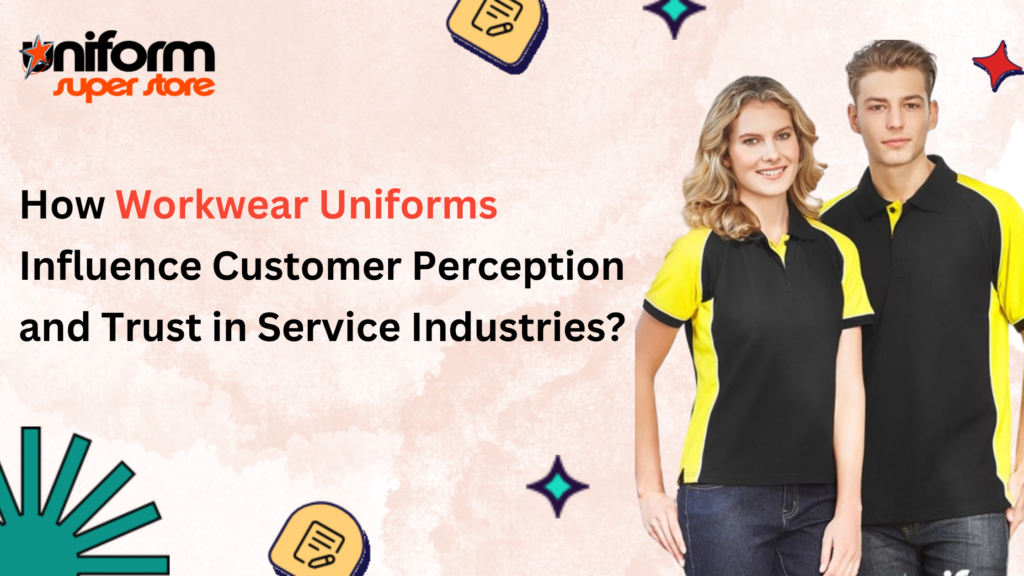Ever walked into a restaurant, saw the staff in mismatched outfits, and immediately questioned the professionalism of the place? We’ve all been there. It’s not just about food or service—it’s about presentation, and workwear uniforms play a huge part in that. The moment you step into a business, whether it’s a cozy café or a high-end hotel, the uniforms are often your first interaction with the brand. And trust me, they speak louder than you think.
Let me share a little story. I was once at an auto repair shop (you know, the kind with a faint smell of engine oil and that “we’ve been busy” vibe). It wasn’t fancy by any means, but every mechanic was decked out in crisp, matching uniforms with the company logo proudly embroidered on the chest. Did I trust them more than the last place where the guys were all wearing random T-shirts and ripped jeans? Absolutely. Why? Because those uniforms signaled to me that they took their work seriously. Their appearance aligned with the professionalism I expected from someone handling my car, one of my most prized possessions.
Now, if something as simple as a mechanic’s uniform can make a difference, imagine what it’s like in service industries where customer trust is paramount—places like hotels, hospitals, or airlines. In these industries, the uniform is often the silent ambassador of trust, authority, and competence. Let’s break it down and explore how these uniforms influence customer perception and why they matter so much.
First Impressions Matter: The Power of Visual Cues
You know the old saying, “You never get a second chance to make a first impression?” Well, that’s gospel in the service industry. Uniforms are the first thing a customer sees, and they form an opinion almost instantly based on this visual cue. And it’s not just about looking neat—it’s about consistency. A well-designed uniform tells a story. It signals that the business is organized, detail-oriented, and, most importantly, trustworthy.
Imagine walking into a five-star hotel. You see the concierge standing tall in a sharp, tailored suit. Instantly, you feel like you’re in good hands. That suit represents luxury, professionalism, and expertise. On the flip side, if the concierge were to greet you in jeans and a T-shirt, no matter how competent they might be, your perception would shift. You might start doubting the level of service you’re about to receive. It’s funny how our brains work that way, but visual presentation—uniforms—plays a massive role in shaping our expectations.
Uniforms as Symbols of Authority
Uniform is not just about looking good—they convey authority. Think about it: when you see a nurse in scrubs, you know immediately that they’re qualified to take care of you. You wouldn’t second-guess their abilities because their uniform reinforces their expertise. The same goes for pilots, police officers, or even the employees at your local bank. The uniform lends credibility, creating a bridge of trust between the customer and the service provider.
In the hospitality industry, for example, a uniformed staff member isn’t just there to serve; they are an extension of the brand itself. A bellhop in a tailored vest or a waiter in a crisp shirt exudes an air of professionalism that reassures customers they are in good hands. It’s almost like wearing a badge of honor—a silent declaration of “I know what I’m doing, and you can trust me.”
Consistency Equals Reliability
There’s something to be said about consistency, and uniforms are a brilliant way to achieve it. When every employee looks the part, it sends a message of reliability. Customers appreciate consistency because it hints at a well-run operation. It shows that the company cares about standards and pays attention to details, from the big things like service quality to the smaller things like the way employees dress.
Think about your favorite airline. Every time you board a flight, the flight attendants are impeccably dressed in their signature uniforms. Whether you’re flying domestically or internationally, that uniform remains consistent, providing a sense of comfort and trust. It’s as if the uniform says, “We’ve got this under control.” It’s reassuring, and in industries where customer trust is key, that sense of reliability can make all the difference.
Building Brand Identity Through Uniforms
Workwear uniforms are more than just clothes—they’re an extension of the brand. From colors to logos, every detail reinforces the company’s identity. And customers notice these things, even subconsciously. A well-designed uniform can make a brand more memorable. It helps to create a cohesive image that sticks with the customer long after they’ve left the establishment.
Take fast-food chains, for example. You can probably picture the uniforms of your favorite chain without even thinking about it. That’s the power of branding through uniforms. The colors, the design, and the logo placement all contribute to a visual identity that customers associate with the experience. Uniforms help businesses differentiate themselves in a crowded market, making them instantly recognizable.
Personalization and Customer Connection
Another thing that’s gaining traction is the personalization of workwear uniforms. Adding names, titles, or even fun elements like badges can create a more personal connection between the employee and the customer. Imagine being greeted by a barista whose apron says, “Hi, I’m Sarah—coffee enthusiast!” It’s a small touch, but it makes the interaction feel more genuine and less transactional.
Customers appreciate this personal touch. It makes them feel like they’re dealing with real people, not just faceless representatives of a company. And in an era where customer experience is everything, these little touches can make a big difference.
Conclusion: The Silent Communicator
At the end of the day, workwear uniforms are much more than just fabric and stitching. They’re a form of communication—a silent but powerful way for businesses to convey professionalism, authority, and trust. In service industries, where customer perception is everything, the uniform plays a pivotal role in setting expectations and building relationships.
So, next time you walk into a hotel or order a coffee, take a moment to appreciate the uniforms. They’re not just there for show. They’re working hard behind the scenes, influencing how you perceive the service and shaping your experience before a single word is spoken.



More Stories
Formal Pakistani Dresses: Look Elegant
The Latest Trends in Women’s Tops This Season
Why Every France Wants Vrunk Hoodie